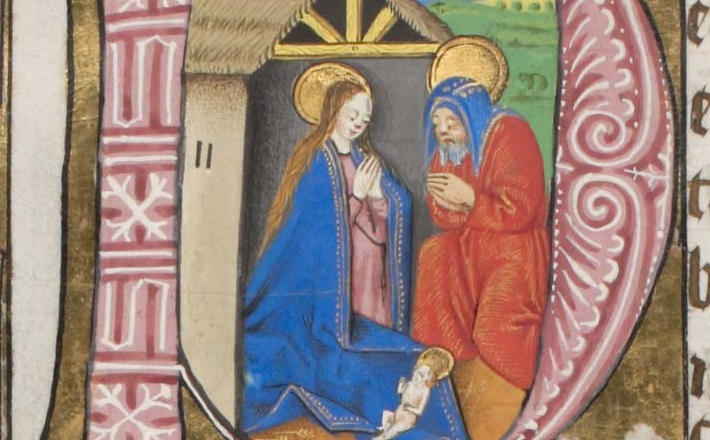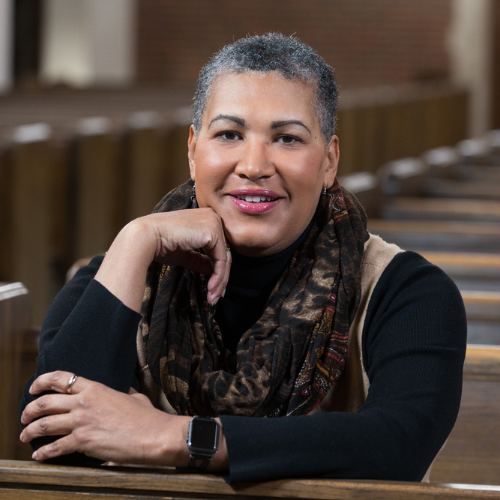Commentary on Luke 2:[1-7] 8-20
Luke’s narrative moves to invite us to recognize that the breathtaking account of the birth of Christ cannot be contained in a twenty-minute children’s pageant.1
Grander than “once upon a time” the opening words “In those days” bring notice of a forthcoming rehearsal of a community’s memories, experiences, and hope. Setting aside expectations of a modern historical account, we can acknowledge the dramatic effect presented by the writer’s continued transposing of expectations. What scholars have labored over as a historical quandary proves to offer a pivotal dramatic move. The scene is set in Galilee, against both Rome and Jerusalem, the civic centers of both Gentile and Jew.
That the writer has spent so many words on this problematic census causes us to miss the poetic economy of his simple announcement of Jesus birth. Firstborn — fulfills prophecy, confirms Mary’s announcement and claims the one thing Joseph has to offer — the first son’s birthright as a member of the house of David. Our narrative imaginations must be converted to recognize the power of this brevity.
Tying the birth of John to Jesus, we experience the intimacy of the family and community celebrating John’s birth. Comparisons to the universal and cosmic responses to Jesus’ birth by angels and shepherds signal that redemption is not merely for one ethnic group, but for all creation.
The writer has neither wasted words nor gotten sidelined by a random vantage point, instead drawing together the political context with the promise of Israel’s deity. What first-century hearers might have failed to notice as sacred confession would be recognizable as societal conflict. This astonishing announcement of the arrival of prosperity is not made to the governor or the Emperor, but to peasant shepherds; not to elected officials, but hired hands. Then, as now, the broadcast of this birth turns civic contracts on their heads. The tension is especially relevant in this extended political campaigning season.
The Governor’s census locates the birth in Bethlehem. Rather than a demonstration of Quirinius’ control, Luke narrates this as the achievement of God’s promise from Micah 5:2. All the echoes of politics and religious culture merge as the listener negotiates the promise of good news between the Greco-Roman world’s imperial cult and the Isianic vision of the coming of the Lord to bring salvation and establish his dominion of peace.
In a time of political posturing and an inequitable economic system, the gravitas of the impending promise is laid against the existing chaos. How pervasive is the peace promised? Who will receive its benefits? Does this program allow for limited participation or an entirely new experience of goodwill by all? Luke blurs the holy with what is ordinarily human, to announce the presence of God with us. As we prepare to tell the story again, consider not only the ancient textual criticisms or familiar myth. Explore also its theo-political dimensions as a living and active drama which narrates us into God’s panorama of peace.
Roman orators and poets would announce the arrival of peace at the birth of the one who will be the next emperor. Luke tells us God shows up in the ordinary and the heaven’s respond in a chorus of awe. Mere shepherds take notice, as if gazing upon a bush that burns without being consumed. The declaration that is heard glorifies God and promises what God does for us to bring peace.
What God does “for us” always arises out of a covenant to be “with us” always. God with us is not a political promise to provide “for” a balanced budget over the next decade. God is with us in the present now: “with” those in poverty, the forgotten, and oppressed. Like the shepherds, we are witnesses to the presence of God among us.
And when we see what God is doing, as reflections of the divine image, we are to go and likewise do. Luke prepares us for such corresponding behavior by demonstrating the hopes of Israel in the drama of the birth of John and Jesus. Having already narrated parallels between the births of John and Jesus, Luke’s presentation continues to highlight the inclusive nature of the divine promise that extends goodwill to all. With this narrative move, Luke exposes John’s ministry as focused on Israel while Jesus’ ministry fulfills Israel’s universal purpose.
Israel’s God promises and delivers peace to the entire world, not merely the elite inhabitants of Caesar’s government. The pattern here is seen between the wandering outcasts and the homebound census travelers — unnamed shepherds, and Joseph and Mary, natives of Bethlehem — Rome’s resident aliens. Within the framework of the narrative, this peculiarity prepares for its corollary in the ensuing journey of Joseph to Bethlehem and the latter journey(s) of Jesus.
The ancient story Luke recorded is dramatized in the church’s witness today. The church can be invited to understand that our celebrating the birth of Jesus in this global seasonal holiday extends the drama narrated by Luke.
Notes
1. This commentary was first published on this site on Dec. 25, 2011.


December 25, 2016